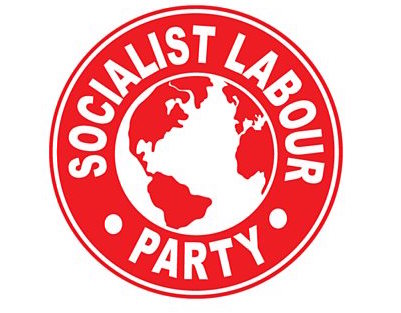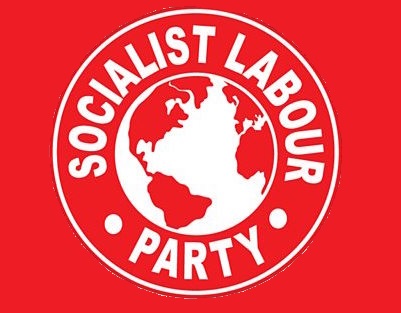Shangara Singh is the Socialist Labour Party candidate for Birmingham Perry Barr on July 4th for the General Election. Shangara has worked in the mental health service for the NHS for 25 years and is committed to the restoration of services by providing the necessary pay and conditions which will bring in staff to end backlogs of those waiting for urgent support and treatment. The SLP believes that money being spent arms, death and destruction should be used for the well being of all our citizens, not least those who provide their labour to achieve this. Look out for the new SLP Manifesto launch. You will find this different to other Manifestos showing how consistent the party has been over many years. This can be seen at socialistlabourparty.org The SLP was restarted in 1996 when a distinguished group of people came together to elect Arthur Scargill to lead. It was first founded by another celebrated group in 1903 including James Connolly.
Category: Uncategorized
-

Statement on the General Election, 4th July 2024
The Tory party has at last named a date for a general election. In government they have been an utter disaster for working class people and indeed the whole country. Poverty levels increase unabated, they have led the country to a state of despair and distress under a threat of increased international destabilisation and war. Their weasel words on the genocide of Palestinians and military support for Israel makes them complicit in that genocide. Only billionaires and food banks have grown under their tenure. And what of Starmer’s Labour Party? They are on record supporting to the hilt ALL of the Tory policies that have led to the above. They too are complicit in genocide. Pale imitations of those two parties; Lib Dem’s, SNP or Plaid Cymru offer nothing substantially different. That is why the Socialist Labour Party will stand candidates in the general election as an alternative to the failures of all the mainstream parties, as some call them, the unaparty! The SLP stands on a manifesto of hope, one that deals with the injustices and inequalities that people in our society face. We want to see a socialist system whose institutions represent all the people and are democratically controlled and accountable. The Socialist Labour Party wants to see a country and a world that is truly at peace, with liberty, justice and prosperity for all. In simple terms we want socialism. Our demands are not excessive; our demands most moderate are, we only want the Earth.
-

SLP Candidates put Party on the map in Gloucester City Elections
Socialist Labour Party members stood in 4 wards in the recent elections for Gloucester City Council. In Baron and Treadworth Akhlaque Ahmed got 296 votes on a crowded selection of candidates representing around 14% of the poll. Another candidate in the same ward had 164 votes, around 8%. Toriqal Islam stood in Coney Hall, Kazol Ahmed and Aswaial Islam Fardeen stoof in Matson, Robinswood and White City and Foujia Sultana Metaly in Quedgeley Fieldcourt gaining a total of 572 votes for the Party in a turnout of 30.8%. This was the first attempt in this area and we look forward to them building on this achievement. John Tyrrell, President, Socialist Labour Party 10/5/2024
-

Are you being kept in touch?
We are concerned that there are members of the Socialist Labour Party we don’t know about. For a time we urged members to pay by Standing Order rather than Direct Debit. The Bank sends notification of money paid in, but particularly with this group the Bank of Ireland only notifies us of “a member” without any further details. Please send us a message on this site if you think it applies to you giving name and contact details. We deeply regret this has happened. We are planning to organise SLP presence at events up and down the country. Today was a May Day Rally in Chesterfield and soon Tolpuddle will be celebrated. We plan to have a presence. Come and join in and celebrate Socialism! Above Mel Hepworth and Terry Robinson from Yorkshire Region; Paul Liversuch and Peter Dean, East Midlands; Shangara Singh, Bhagwant Singh and John Tyrrell (behind the camera!) West Midlands. We are hoping that members can join us at Tolpuddle later this year. Rob Hawkins of the South West Region will be organising this. You can find his details in the regions shown on the website.
-

Gaza Solidarity Encampment at Holyrood outside Scottish Parliament
David Jacobsen of the Socialist Labour Party in Scotland has sent pictures of the Gaza Solidarity encampment in the grounds of the Scottish Parliament at Holyrood. They are protesting about the Scottish and UK governments’ complicity in the genocide proceeding in Gaza and vow to stay until their demands are met. This includes a permanent Ceasefire. https://news.stv.tv/east-central/gaza-solidarity-camp-set-up-outside-scottish-parliament Hi John, Thanks for the message. Good progress. This is student/local communities work on the ground with international solidarity from US and Palestinian peace activists’ fight to free Palestine. Great determination to sustain the picket of Scottish Parliamentary representatives for as long as it takes. The Scottish government has signed up to the false definition of anti-semitism and has a yet to test it with a prosecution in Court. In Solidarity, David PS rained out this morning. Morale high. PPS Saturday a new encampment established in University of Edinburgh Balfour Quadrangle. Good two way communication between the two groups. PPPS Today 6.5.24 morning report, to be verified) Israel State IDF has ordered evacuation of Eastern Rafa. David Jacobsen, Socialist Labour Party Scotland 5/5/2024

